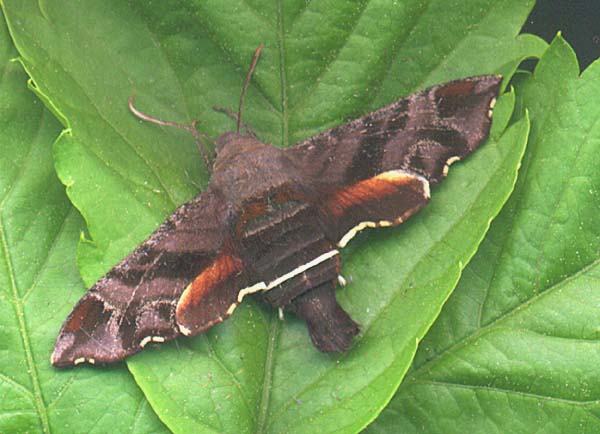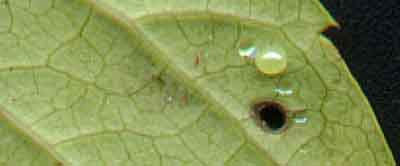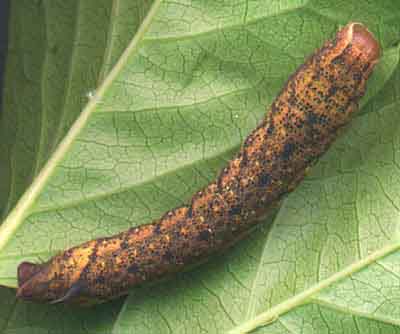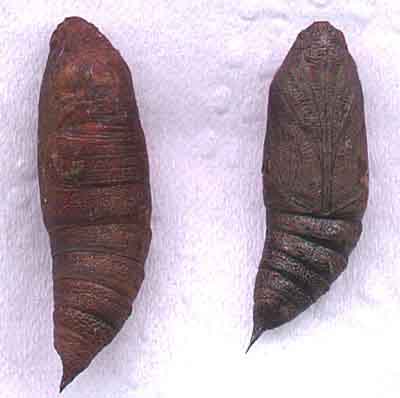
Daily I hand-fed the female a ten percent sugar-water solution with a bit of dissolved honey, and during the next five or six days she deposited approximately 85 ova, predominantly on creeper but some on grape and even a few on blackberry foliage. |  In the above scan, shiny traces of emerged ova remain, and decay has already set in around a hole nibbled from leaf underside. |
Cuttings of creeper were taken and larvae were easily removed from
old foliage with fingers. Larvae seemed content to eat wilted leaves rather than move to
fresh food. |
 |
By July 12, larvae had entered final moult and colour change from yellow-green
to light brown was rather striking.
The larvae would feed voraciously at night and hide along the brown creeper stems by day. | 
|
Favorite nectar sources for the adults, which are frequently found in forest clearings, streamsides, and in the suburbs where larval hosts have been introduced, are lilac (Syringa vulgaris), herbrobert (Geranium robertianum), beauty bush (Kolkwitzia amabilis), mock orange (Philadelphus coronarius), and Phlox. |
 |
Typically these larvae pupate in shallow underground chambers. I simply removed them to "pupation buckets", empty five gallon buckets with several layers of paper towels along the bottom. Buckets were kept covered, warm, and in a dark place and pupations began on July 22.Pupae are at first quite soft and light in colour and should not be handled for several days until shell has hardened and darker colour has prevailed. For overwintering, here in the north, pupae will be stored in a loosely lidded box in the refrigerator crisper. | 
|